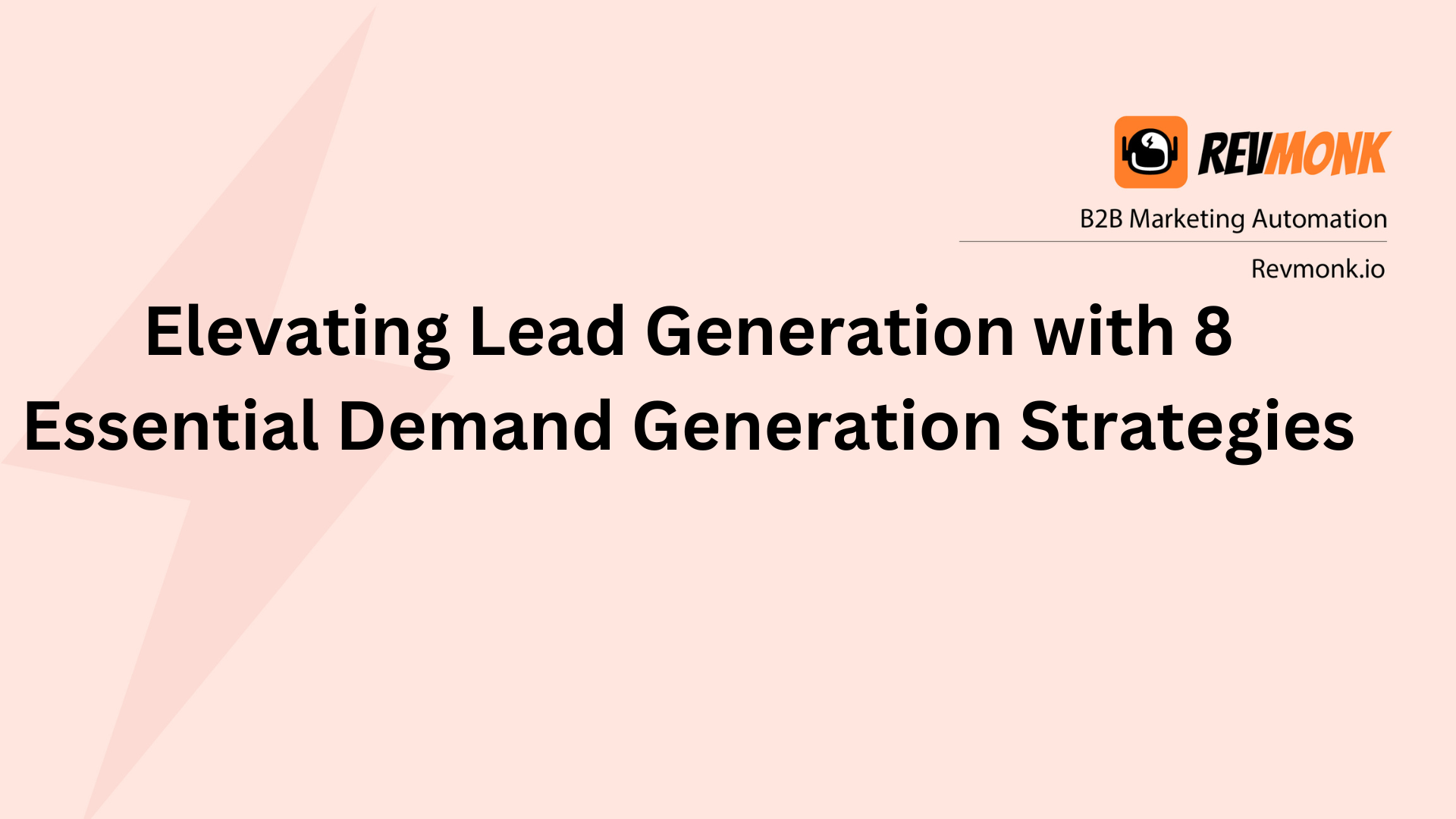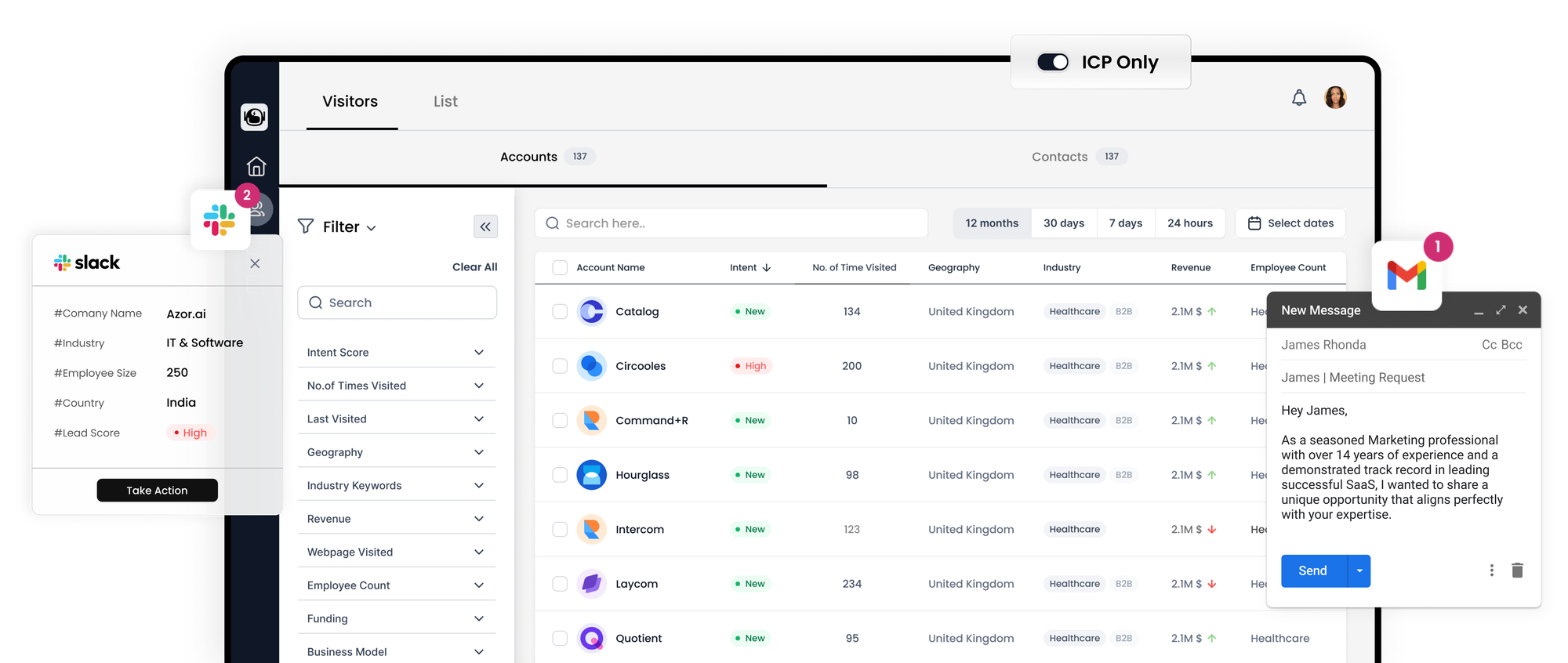Elevating Lead Generation with 8 Essential Demand Generation Strategies

At first glance, lead generation may appear straightforward—an approach to identify and connect with potential customers to expand your clientele. However, traditional lead generation methods can often prove time-consuming and occasionally impractical. Companies frequently invest their resources into in-house filtering processes that yield results at a sluggish pace. While Business-to-Business (B2B) marketing incorporates technology to scale and enhance the lead-generation process, there is a compelling need to streamline these solutions for maximum efficiency.
The predicament lies in the fact that sales pipelines often become inundated with low-quality leads, necessitating a time-consuming filtration process. Consequently, businesses should prioritize their demand generation strategies.
This article delves into the realm of demand generation, unveiling how it can generate high-quality, self-filtering leads that ultimately transform into loyal clientele.

Deciphering the Essence of a Demand Generation Strategy
A demand generation strategy is a marketing approach designed to cultivate awareness and demand for your products or services. It serves as a catalyst for creating buzz, extending your reach, driving web traffic, and ultimately expanding your customer base by translating interest into tangible action.
Furthermore, a well-crafted demand generation strategy facilitates the creation of a predictable sales pipeline for your sales teams. The primary objective revolves around guiding prospective clients through the buyer's journey, typically comprising three pivotal stages: awareness, consideration, and decision, culminating in their transformation into qualified leads:
Crucial Advantages of Demand Generation
Demand generation strategies offer a multitude of advantages compared to conventional lead generation approaches. Below, we explore some of the most prominent benefits of embracing a demand generation strategy:
1. Amplified Brand Awareness
Demand generation tactics function as potent engines for brand visibility, attracting relevant traffic to your website. Effective inbound marketing campaigns distinguish your brand within your industry, rendering your offerings visible to individuals who may not yet recognize their need for your product. When potential customers encounter your products and services through content and thought leadership pieces, it fosters brand recognition and trust. Consequently, they are more inclined to seek your brand when they recognize the indispensability of your product or service. An integral facet of demand generation is its immediate impact, drawing engaged and interested traffic to your website. Nevertheless, it is crucial to emphasize that all brand awareness strategies should aim for both short-term and long-term effects, as businesses must continually nurture the demand for their offerings over time.
2. Enhanced Lead Generation
While demand generation differs from lead generation (as lead generation constitutes a component of demand generation, primarily focusing on the top of the sales funnel), a comprehensive demand generation strategy should yield a substantial increase in leads. When executed proficiently, demand generation populates the upper echelons of the sales funnel with a steady stream of high-quality prospective clients. However, depending on your product offerings and industry, nurturing these leads can sometimes be time-intensive. Thus, demand generation tactics must prioritize both efficiency and quality. By strategically conveying that your brand is indispensable to prospects, you enhance your capacity to convert these prospects into high-quality leads and, subsequently, long-term customers.
3. Augmented Revenue
It is intuitive that more demand equates to greater revenue. The larger the audience exposed to your brand and the more effectively you align your product or service with the needs of your target demographic, the higher your sales potential becomes. Demand generation operates as both a short-term and long-term revenue strategy. By establishing a consistent, meaningful connection with your target audience, you pave the way for desirable outcomes in your sales pipeline. Without amplifying brand awareness and nurturing relationships with prospective customers, revenue growth remains an elusive pursuit.
Crafting an Effective Demand Generation Strategy: 8 Strategic Approaches
Demand generation involves creating a need for your offerings and subsequently persuading customers to make a purchase. Unlike other marketing strategies, demand generation encompasses every touchpoint of the customer journey before they enter your sales funnel.
If your marketing team is venturing into this domain for the first time, it may seem nebulous or challenging. To assist you in this endeavor, we present eight highly effective demand generation tactics that you can begin implementing immediately.
1) Embrace LinkedIn
LinkedIn has evolved from a professional networking platform into a robust lead generation and content-sharing platform. With a staggering 97% of content marketers utilizing LinkedIn, it is a pivotal marketing platform. Launching LinkedIn marketing campaigns enables you to gain a deeper understanding of your audience and leverage the platform's insights. Experimentation with features such as sponsored messaging can enhance your demand generation endeavors.
2) Tailor Content to Sales Funnel Stages
Your potential clients seek information about your products and services at various stages of the sales funnel. Addressing their needs at each stage through tailored content fosters awareness and demand for your offerings. Examples of content for different funnel stages include blog posts, infographics, and short videos for the top of the funnel; case studies, detailed guides, and white papers for the middle of the funnel; and competitive comparisons, demos, and customer stories for the bottom of the funnel.
3) Harness Consumer Intent Data
Leveraging intent data, which encompasses data about an individual's online behavior, from search keywords to purchase history, allows you to target individuals actively seeking similar solutions. This data aids in discovering new prospects, creating personalized content, delivering high-quality leads to your sales team, shortening the sales cycle, and increasing customer retention.
4) Implement Account-Based Marketing (ABM)
ABM is a B2B marketing strategy that focuses on targeting specific individuals or small prospect groups rather than a broad, impersonal approach. By personalizing marketing efforts for high-value accounts and tailoring solutions to their unique needs, ABM enhances demand generation. Tactics may include personalized emails, webinars, custom landing pages, and participation in enterprise events.
5) Foster Sales-Marketing Collaboration
Bridging the gap between sales and marketing teams is crucial for efficient lead acquisition. Streamlining processes and communication between these functions ensures a well-rounded strategy, drives demand for your offerings, shortens sales cycles, and generates more revenue. Utilizing cloud collaboration platforms with features like real-time updates and internal messaging enhances efficiency.
6) Leverage Chatbots and Marketing Automation
AI-driven chatbots and marketing automation streamline processes, collect data on prospects' activities, and enable the delivery of customized marketing messages and emails. Chatbots offer a brand-centric communication channel, and automation tracks sales, sends notifications, onboards new customers, and retains existing ones with timely promotions.
7) Implement Omnichannel Strategies
Embrace omnichannel marketing to reach customers on platforms they frequent. This approach expands your brand's reach and allows you to engage strategically with your target audience. Scheduling posts on multiple platforms with optimized design and consistent messaging ensures a comprehensive presence.
8) Prioritize User Experience
Continuously monitor critical statistics and experiment with site designs to optimize user experience. Studies show that organizations witness a 55% increase in quality leads when they increase their landing pages from ten to fifteen. Your website serves as the initial touchpoint with your brand, so providing a seamless and positive experience is crucial. Regular optimization ensures you don't miss out on potential customers, enhancing your site's appeal and monetization potential.
By implementing these demand generation strategies, you can create awareness, generate demand, and ultimately drive revenue while fostering valuable customer relationships.
Best Practices for Effective Demand Generation
Successfully converting audience interest into leads and, subsequently, customers is the essence of effective demand generation. B2B marketers rely on actionable tips and practices to formulate their strategies. Here are some key best practices to consider:
1) Maintain Consistency
- A diverse demand generation strategy encompasses various formats and customer touchpoints. However, consistency and stability are essential to align all elements for a cohesive customer experience.
- Ensure uniformity in voice, messaging, and style across different customer interactions to reinforce your brand's values.
- Continuously refine your messaging to make your brand voice clear and appealing, avoiding any potential turn-offs for prospective customers.
- Consistency enhances your brand's online reputation and fosters customer recognition and connection.
2) Collaborate with Sales Teams
- Develop visually distinct and compelling calls to action (CTAs) tailored to specific buyer personas to guide prospects to your sales team.
- Once prospects become qualified leads by providing their information, your salesforce can take charge of the sales process.
- A strong collaboration between marketing and sales is vital to understanding audience motivations and content preferences.
- Combining quantitative data with insights derived from customer conversations provides a comprehensive understanding of lead generation and conversion.
3) Create Customer Journey Maps and Buyer Personas
- A customer-centric approach is crucial in demand generation. Understand your ideal customer profiles and how to influence them.
- Develop buyer personas and map their journeys through the customer lifecycle.
- Visualize customer journey maps and personas as characters and events in a story, each with unique traits, motivations, and experiences.
- Comprehensive knowledge of your audience and their needs enables more effective marketing of your offerings.
4) Optimize and Analyze Campaigns
- Data-driven analysis is key to successful demand generation. Investigate which buyer personas convert, the messaging that resonates with them, and the most appealing offers for different demographics.
- Consider setting up a digital dashboard to monitor key performance indicators (KPIs) over the long term.
- Evaluate the performance of every content piece by topic or suggestion, tracking metrics such as overall traffic, visibility, conversion rates, organic traffic, sales qualified leads (SQLs), and marketing qualified leads (MQLs).
Conclusion
A robust demand generation strategy captures the attention of new leads and prospects, fostering engagement, particularly through interactive content. It establishes a relationship between your brand and potential clients by demonstrating the value of your product or service.
To effectively scale demand generation efforts and achieve substantial marketing returns, a strategic approach is essential. Leverage automation where possible, prioritize collaboration between marketing and sales teams, and continuously analyze the effectiveness of your marketing campaigns.
By following these best practices, you can enhance your demand generation strategy, increase customer conversions, and ultimately boost your revenue.
